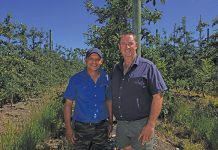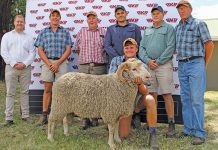
Groundwater, which is found beneath the soil surface, supplies boreholes and springs. Groundwater recharge is the process in which this supply is replenished or replaced.
This happens naturally when it rains, or it can be stimulated by a farmer’s land use.
READ Groundwater conservation: a long-term investment
Contour ridges and contour stone bunding are low-cost, low-maintenance methods for improving groundwater recharge on cultivated land or along river channels. Contour ridges are suitable for slopes of up to 5% with stable clay soils.
Bunding and contouring
Bunds or bunding are suitable for semi-arid stony areas with a slope of up to 2%. These are upraised structures made of rock or earth that retard water flow and increase water infiltration.
A downslope ditch below the bund will further retard the water increasing infiltration and water storage.
On a slope between 5% and 20% with light to medium soil (sandy to sandy loam), contoured structures must be terraced. Bunds on the terrace and a ditch after the terrace can be included.
On a gentle slope (around 5%), space the terraces further apart (up to 20m), and on a steeper slope (around 20%) closer together (5m).
On a heavy clay slope, terraces may lead to waterlogging. Here, contour ridging without ditches may be more appropriate and increase crop yield.
Permeable sand dams, rock dams, recharge trenches and gabions (structures filled with rocks) all slow water runoff and thus recharge soil water and prevent erosion.
Gabions can restore an eroded river bank, while a sand or rock dam can be used to restore a valley floor. Consult an expert in either of these cases, as poor construction can divert water and cause soil erosion.
Flood protection
Recharge pits filled with boulders, rocks, gravel and sand are especially useful in areas with a strongly seasonal rainfall.
The pits protect against flooding and can also recover water from roofs where a gutter conveys water to the pit, or from a trench surrounding a well.
Source: Hawkins, HJ and Stanway R. 2013. The Sustainable Dairy Handbook: For SA Dairy Farmers. Nestlé Printers: Bryanston, South Africa.













